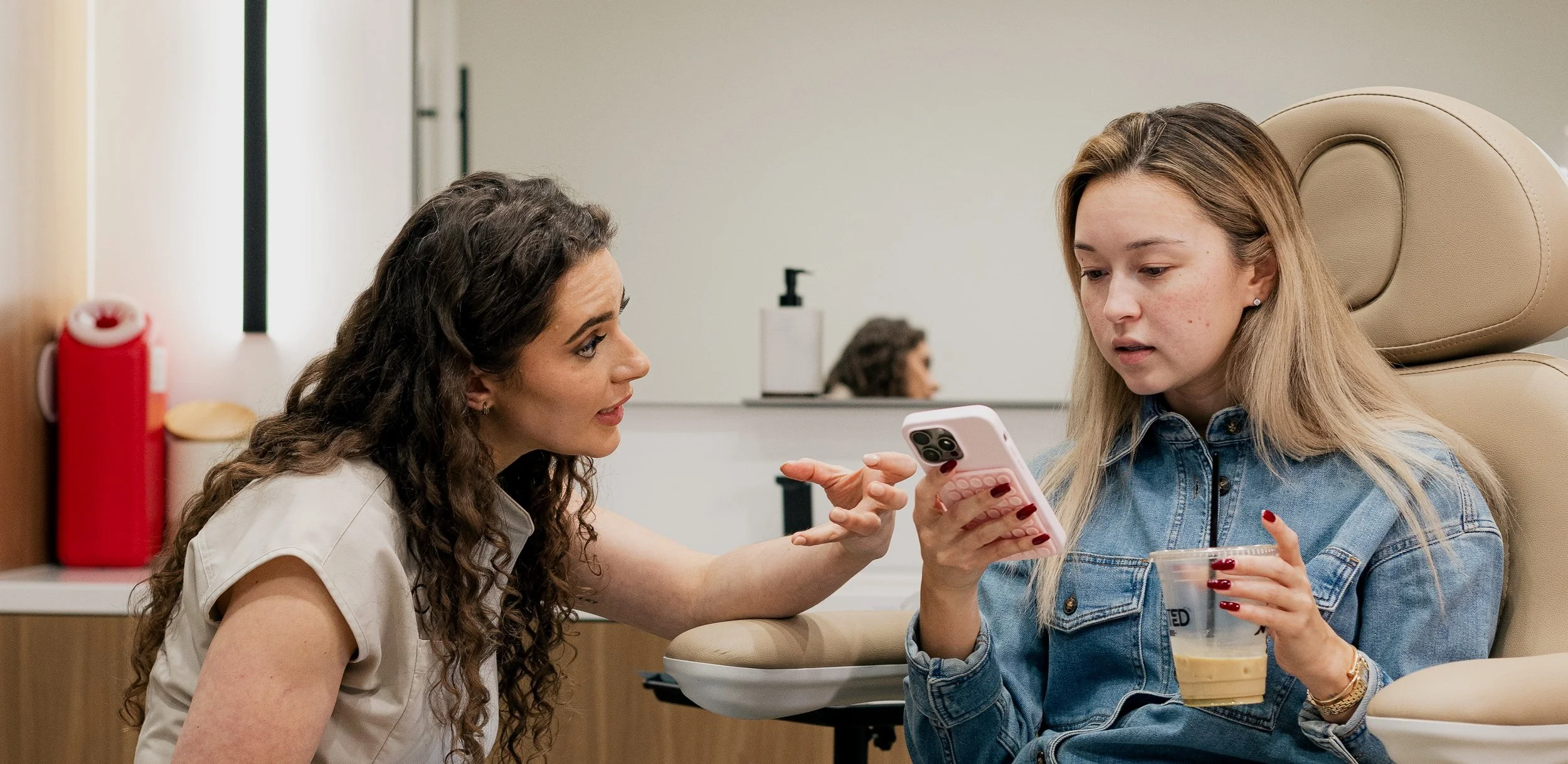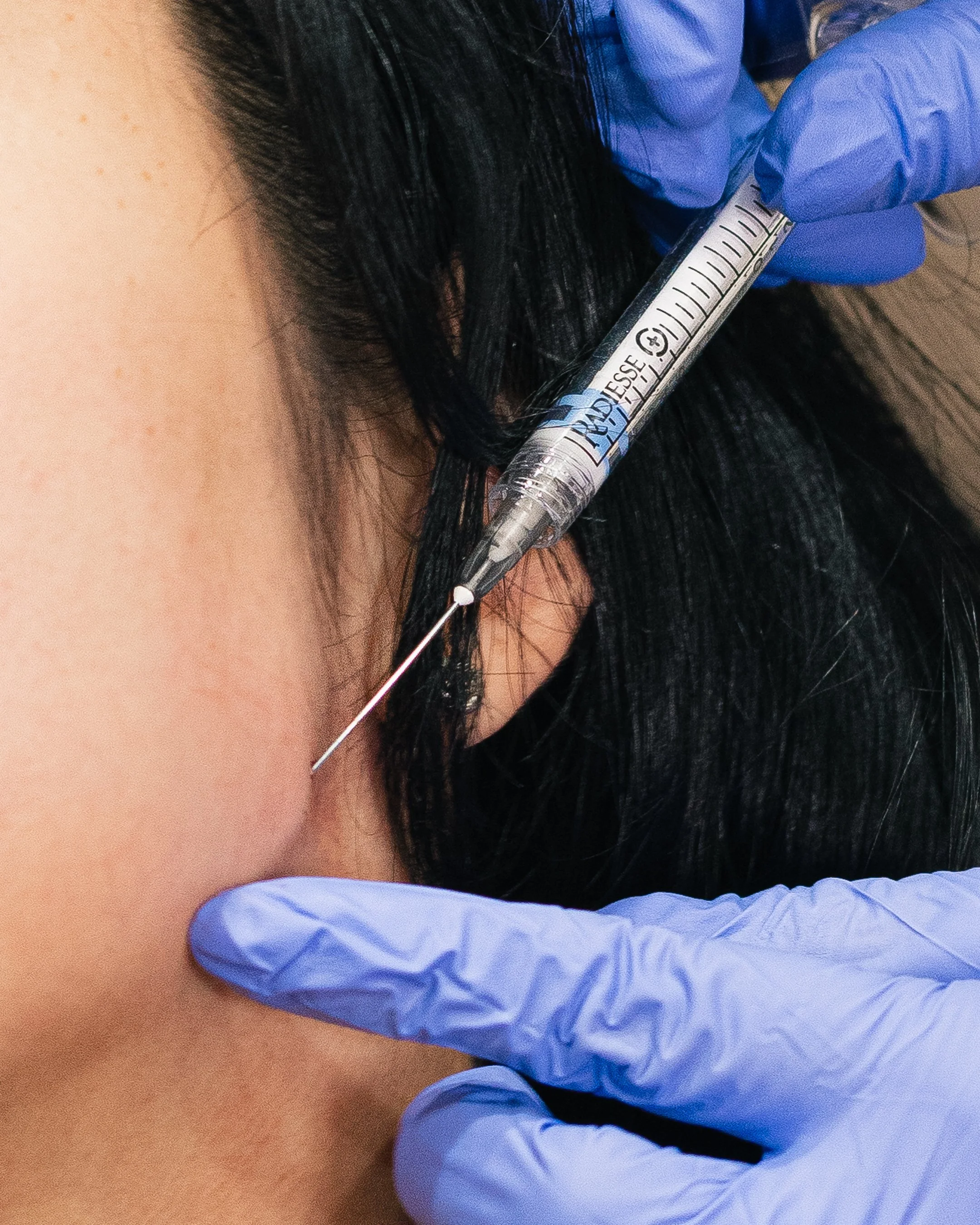"Is Filler Bad Now?"
Why Everyone's Scared of Filler (And Why They Shouldn’t Be)
Let’s just say it out loud: Filler has a bad rep right now. And honestly? Deserved.
Not because filler itself is bad. But because too many people were chasing Instagram trends, overfilled cheeks, jawlines that didn’t match their body, and providers who cared more about clout than your actual face.
Now we’re living in the aftermath. A generation of people scrolling TikTok thinking:
"I want to do something... but what if I end up looking crazy?"
You’re not alone. Let’s get into how this happened.
How the Filler Fear Started
To understand why filler has become something people fear, you have to understand how the industry shifted. It didn’t start with medicine. It started with filters.
FaceTune. Instagram. Snapchat. Stories. Virtual enhancements that made your skin poreless, your jaw sharper, your lips fuller, your face tighter. We stared at filtered versions of ourselves—and then expected to look like that in real life.
Injectors, trying to keep up with demand, started saying yes to everything:
“Yes, we can do your lips like that.”
“Yes, we can contour your jaw like that.”
“Yes, we can fix your face today.”
But faces aren’t filters. And real anatomy doesn’t respond to volume like a digital slider. The moment filters became the aesthetic baseline, the entire industry changed.
Your injector should never make you feel like you’re just another number to them (whether that is in dollar signs or content to go viral).
The Rise of the Medspa-Influencer Era
Somewhere between 2018 and 2022, aesthetics became content. You weren’t just going to a medspa. You were going to a place with a Ring light and a mini photoshoot setup.
Your appointment came with:
A before-and-after carousel
Your injector doing a trending dance
A hook like “watch this insane transformation!”
And here’s the thing: The work didn’t get better. The marketing did. Clinics realized they could grow by playing the algorithm game. Fast treatments. Big results. Flash sales. TikTok trends. Packages based on “vibes.”
The vibe was addicting. But the results were... off.
Because no one was talking about:
Fat pad migration
Structural aging
Muscle movement distortion
The difference between short-term plumpness vs long-term harmony
You’d go in for “cheek filler” and come out looking like someone else. Or worse—you’d get just enough filler to lose facial definition but not enough to actually look better. And when it didn’t look right? They’d just suggest “a little more,” or “wait until it settles.” The worst? When you get gaslit and they tell you that everything looks fine.
Lip filler can go wrong fast when overdone or poorly placed—but when done with precision, it enhances your natural lip shape, balances proportions, and looks effortless.
Why the Public Turned
Eventually, we all started seeing it. The influencer puffiness. The unnaturally sharp noses. The faces that didn’t move right. The clones.
And quietly, people began to ask:
“Is this what we all look like now?”
The wave of dissolving started. Influencers admitted their mistakes. Celebrities reversed everything. Clients started whispering to their providers, “I don’t want to look like that.” But by then, the damage was done. Not just to faces—but to trust. Now people are scared to get filler not because they don’t want it—but because they’ve seen what happens when it goes wrong.
The Real Science of Why Faces Start to Look “Off”
What no one explained clearly:
Stacking filler in the same area over and over = migration: Your body doesn’t just hold product in a neat little spot forever. It breaks it down, redistributes, and if you keep refilling without reassessing, it can end up puffing outward or sitting in the wrong plane.
Wrong depth, wrong technique, wrong product: Not all filler is the same. Cheeks, lips, temples, chin—they all need different density and placement. When people get the wrong type or placement, they start to look inflated, not enhanced.
Filler and facial movement: When filler is placed in a high-movement area (like around the mouth or under the eyes), it interacts with muscle contractions. Over time, this can create puffiness, asymmetry, or even interfere with natural expressions.
Ligament weakening and fat pad displacement: When you keep pushing volume into areas that don’t need it, you’re displacing the natural support systems in the face: ligaments, deep fat pads, and skin tension. This makes the face look heavier, distorted, or aged faster.
Radiesse is an injectable biostimulator that’s ideal for the lower face and jawline—perfect for tightening, lifting, and restoring definition without looking puffy. It works by stimulating your body’s own collagen, giving long-term firming and structure instead of just filling space.
Not All Injectables Are Filler
When people say “filler,” they usually mean HA (hyaluronic acid) based products. These are temporary, reversible gels designed to add volume. But that’s not the only injectable option.
Biostimulators like Sculptra or Radiesse work differently. Instead of “filling,” they stimulate your own body to produce collagen. They take longer to show results but are often better for:
Skin texture and firmness
Jawline support without puffiness
Natural midface lift over time
A combo approach is often ideal:
Use HA for shape and contour where needed
Use biostimulators for internal scaffolding and skin support
But most people never even hear about this because too many injectors push “syringe count” over long-term planning.
You Might Think You Want Filler... But What You Actually Need Is:
Volume in your cheeks? Maybe. But maybe you need lateral support not midface fluff.
Lip filler? Maybe. Or maybe your lips are turning in because of perioral volume loss.
Nasolabial fold correction? That line isn’t the problem. It’s likely cheek descent and midface volume loss.
Under-eye hollowness? Could be fat loss—or ligament tension or poor support below the eye.
A good provider will never just inject what you ask for. They’ll tell you what’s really going on and why.
What to Ask Before You Ever Get Filler
Most people don’t even know what to ask. So here you go:
Is this a volume loss issue or a structural support issue?
What are my facial fat pads doing as I age?
How does this treatment plan consider facial movement and long-term changes?
Are you using HA or a biostimulator—and why?
What complications are most common with this placement?
How do I know this plan fits my face and not a trend?
And the golden one:
Are we treating the symptom or the source?
Because if you’re treating the fold instead of the cause of the fold, it’s a temporary fix. And that’s how you end up chasing your face.
A good provider will always walk you through what their recommendation for your goals are (and give you a chance to say no)
How to Actually Choose a Good Medspa
Forget the flashy reels. Look for:
The faces of the team: Do they look refreshed or overdone? If you wouldn’t want your results to match theirs, that’s a red flag.
The before & afters: Is there restraint? Balance? Can you tell if anything was even done? Subtle work is often the best work.
The website: Does it feel intentional? Do they educate or just sell? If they don’t care about the words on their site, they probably don’t care enough about your face either.
Their tone: Are they guiding you or hyping you? Do they ask you what you want or tell you what’s wrong with your face?
A good provider protects your face first. They don’t need to rush, overfill, or overpromise.
BTW: You Don’t Have to Get Filler Every Year
Here’s another myth:
“Once you start, you’ll always need more.”
That’s only true if your plan is reactive and trend-based. When filler is done strategically and with anatomical integrity, you can get it once and leave it alone for years.
Filler, just like all aesthetic treatments are more like a restoration, not a trend. Done well, it should look good in motion, at rest, and on no makeup days. You shouldn’t see the filler. You should just see you—more awake, more rested, more you.
How We Do It: The Filler Precision System at Core Aesthetic
At Core Aesthetic, we don’t do hype. We do intentional facial design that respects your face, your timeline, and your trust.
Our treatment plans are built around:
Anatomical mapping: We analyze your bone structure, fat pad changes, skin tension, and facial movement.
Restraint-first planning: We do less to achieve more. Your results look good now and 5 years from now.
No-pressure consults: You’ll never feel rushed or pushed into a treatment.
Long-term outcomes: Our work holds its integrity because we don’t overdo it.
Filler + biostimulator hybrid planning: We choose the best material for each goal—not just what’s trendy.
If you want your face to look like you—but more rested, lifted, and refined—we’re here. No trends. No puffiness. No regrets.
Book your consult or contact us with questions.
You’re allowed to want more for yourself. Just do it with people who want what’s best for you.





